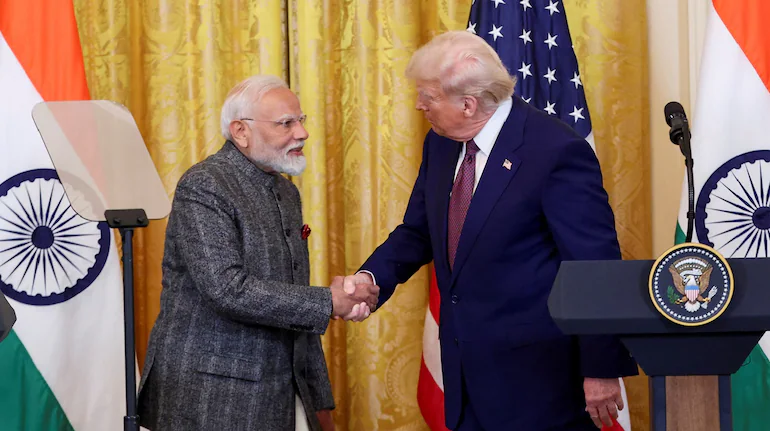India‑US Mini Trade Deal: Racing Against Time Ahead of July 9 Tariff Deadline

In a high-stakes diplomatic sprint, India and the United States are finalising an interim, or “mini,” trade deal designed to avert looming tariffs set to kick in on July 9. As negotiations enter their final 48 hours in Washington, both nations are fighting to secure a deal that meets urgent economic and political thresholds
⚠️ Tariff Tensions: What’s at Stake?
- July 9 deadline: The U.S. previously implemented a 10% tariff in April. Unless a deal is reached, an additional 16% retaliatory tariff may be imposed on Indian goods—a potential 26% hit .
- Core U.S. demands: Washington seeks greater access to India’s import markets, especially in agriculture, dairy, nuts, apples, and genetically modified produce, and wants India to lift non-tariff barriers .
- India’s stance: Delhi is resolute in protecting sensitive sectors—most notably dairy and agriculture—declaring such areas “red lines” it refuses to cross
🚦 Negotiation Landscape: Fast but Fragile
- Final push in Washington: India’s delegation, led by Commerce Ministry’s Special Secretary Rajesh Agarwal, has extended its Washington stay to seal the deal before the deadline
- Conditional breakthroughs possible: Sources hint at breakthroughs, but these will likely yield limited accommodations rather than sweeping reforms .
- Structure of deal: The mini deal is expected to focus on reciprocal tariff reductions on non-sensitive items—such as garments, leather, industrial parts—while leaving complex sectors like autos, steel, agriculture, and dairy for later
💡 Political Stakes & Strategic Context
- Modi‑Trump economic vision: The deal aligns with a broader “Mission 500” goal—doubling bilateral trade from $191 billion to $500 billion by 2030 .
- Balance of interests: Washington aims to bolster capital-intensive U.S. exports; India seeks expanded labor-intensive product access. Both now face pressure from domestic constituencies .
- External pressures: U.S. trade tensions with Japan and others add urgency. A deal with India could set regional trade precedents .
🔍 Economic & Sectoral Implications
- For India: Exporters in labor-heavy industries—textiles, leather, small-scale manufacturing—stand to benefit if tariffs are rolled back. However, minimal concessions in agriculture and dairy protect rural livelihoods .
- For the US: U.S. exporters of nuts, fruits, oil and gas could gain entry into India, while U.S. manufacturers desire reciprocal access for machinery and auto parts .
- Market impact: Stock markets could react to news—tariff relief often boosts exporter shares, whereas talks collapsing may damage sentiment .
🧩 What a Mini Deal Looks Like
- Limited reciprocal tariff cuts on select manufactured goods.
- Exclusion of sensitive sectors: agriculture, dairy, auto, steel.
- Commitments on energy trade—for instance, increased U.S. natural gas sales to India .
- Agreement framework: A bridge to a fuller, 19‑chapter Bilateral Trade Agreement (BTA) to be addressed post-Oct 2025 .
🕰️ Countdown & What Comes Next
- Timeline: With just days left, negotiators are pushing for a July 4–5 announcement. Otherwise, U.S. tariffs resume on July 9 .
- Potential scenarios:
- Success: Limited tariff relief, deadline averted, and momentum built for broader talks.
- Failure: Tariffs snap back, damaging exporters and straining relations, though broader BTA efforts continue .
- Broader agenda: Beyond this, both nations aim to negotiate a full BTA covering services, investments, digital trade, intellectual property, defense—with timeline targeting autumn of next year .
📝 Final Word
The India‑U.S. mini trade deal isn’t a sweeping resolution—but rather a strategic detente: a narrow agreement aimed at stabilising trade amid a volatile tariff environment. With mutual economic benefits hanging in the balance, negotiators are seeking a pragmatic balance—protecting each country’s political and sectoral interests while avoiding disastrous tariff escalation.
Ultimately, this “mini” deal could pave the way for a more comprehensive trade partnership in the next phase. As both capitals await a breakthrough in Washington, all eyes are on whether Delhi and Washington can meet before and not after July 9, 2025.
Stay tuned for real-time updates as this critical economic narrative unfolds.
